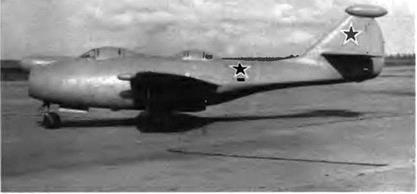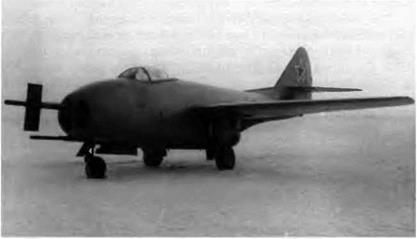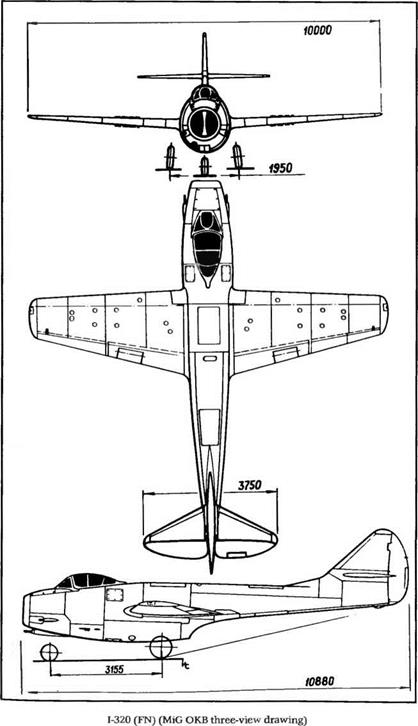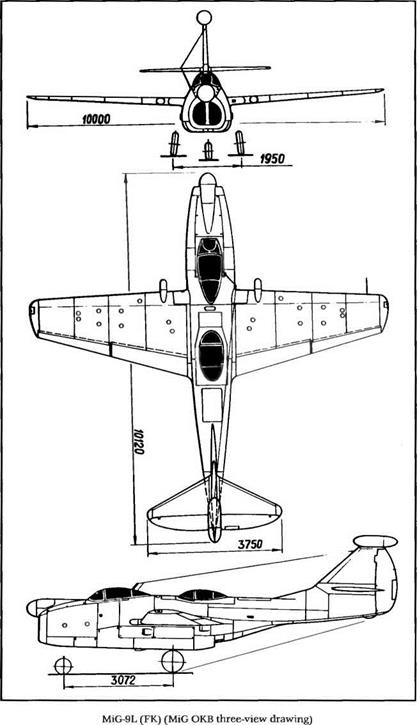I-3D7 / FF with Babochkoi
Yet another attempt was made at overcoming the engine flameout problem. A large hollow plate was centered on the N-37 barrel square with the engine air intake plane. The resulting shape resembled (if one used one’s imagination) a babochka, or butterfly.
Hot gases from the cannon’s muzzle were sucked in a slot in the plate’s leading edge and then vented through other slots at the top and bottom of the plate. In theory, that would neutralize the effects on the airflow of the temperature rise at the air intake level, which was disrupting the engine combustion stability, and the engines could not flame out anymore. Tests carried out at the end of 1948 (as production of the MiG-9 came to an end) showed that the "butterfly" had few positive effects—in fact, it increased the plane’s drag and reduced yaw stability.
|
Yet another attempt to end the engine flameout when firing the guns, the “butterfly" was of doubtful effectiveness. |
|
|
|
|
 |
І
 |
The FK was a modified FS used as a two-seat test bed for the guidance system of the KS-1 missile
The FK bristled with transmitting and receiving antennae—above the engine air intake, on the leading edge of the wing, and on top of the fin The test engineer was seated in the rear cockpit
|














